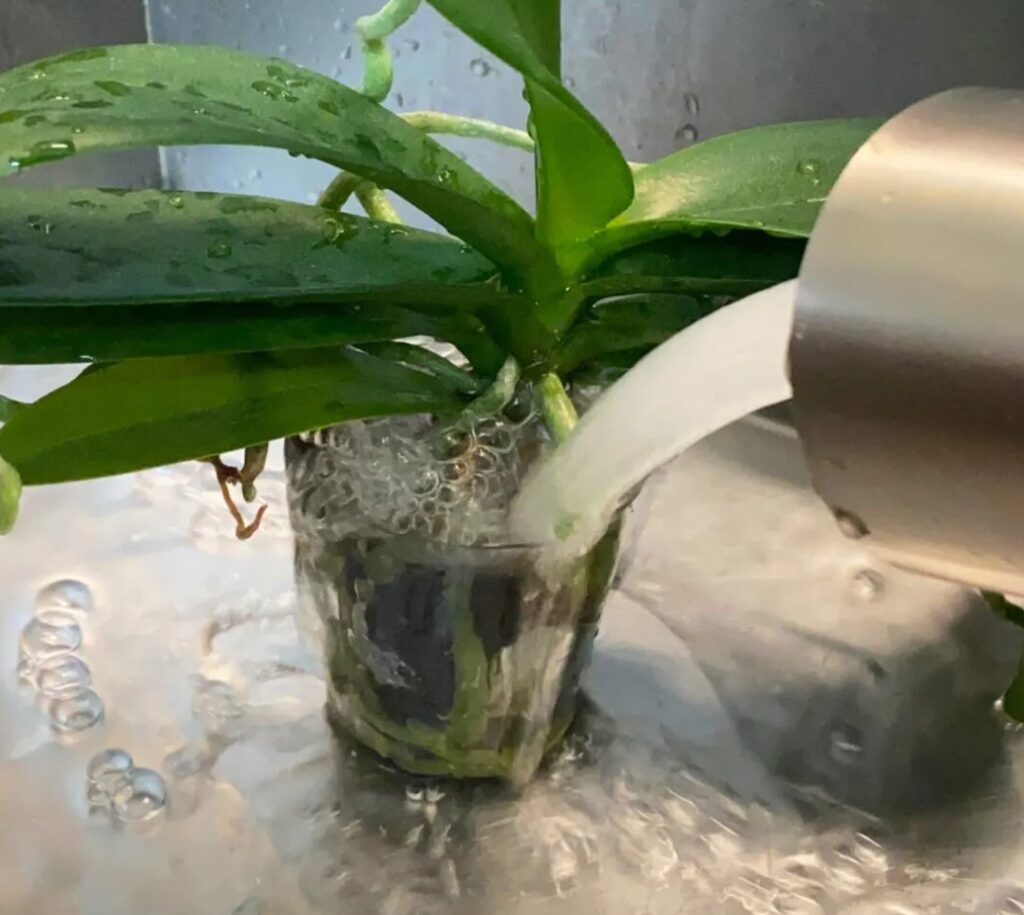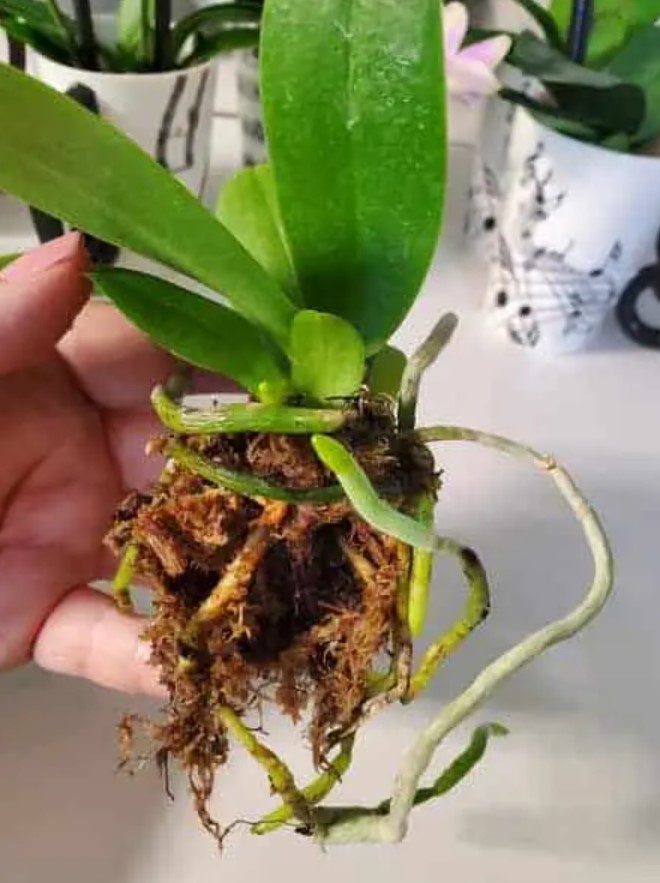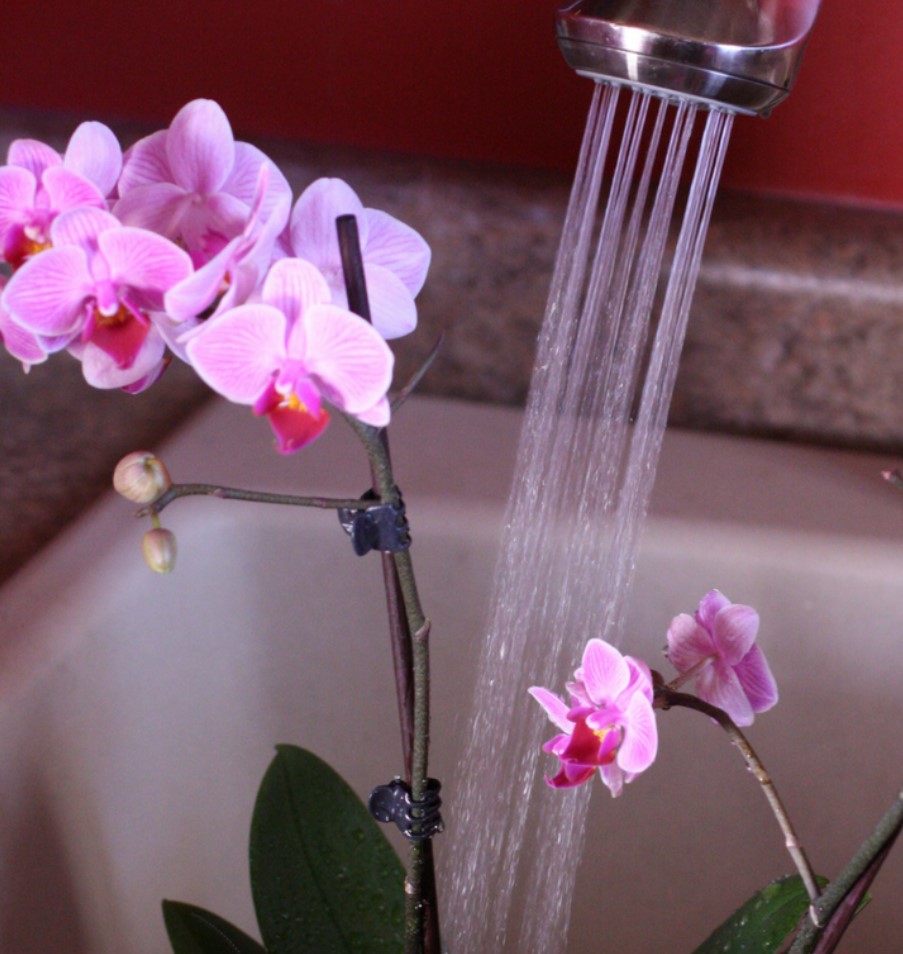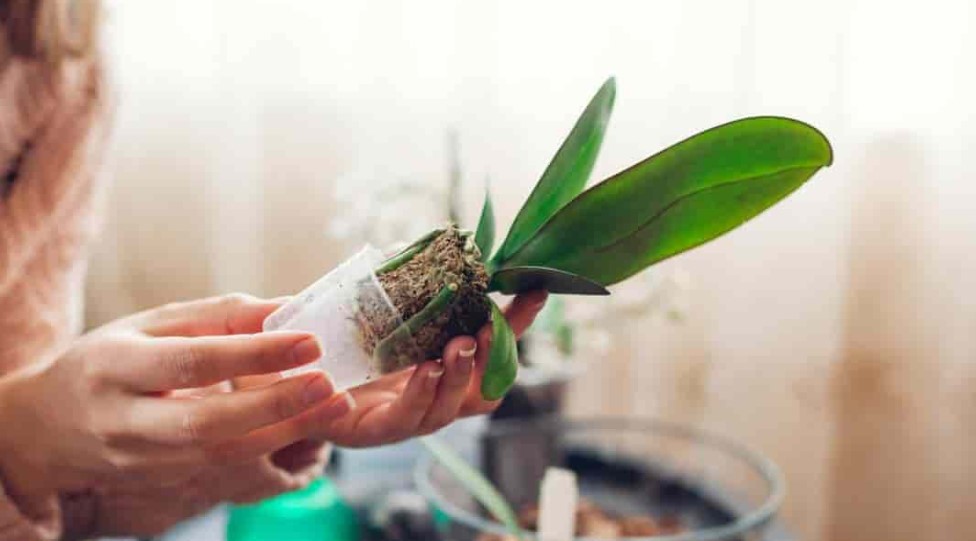Watering orchids in moss is relatively straightforward, but there are a few key tips to consider.
First, when watering orchids in moss, always saturate the medium with a slow stream of water from the top of the pot and allow it to soak through the medium before adding more.
This ensures that all of the moss is evenly moistened. Second, avoid over-watering orchids in moss; make sure to allow the top layer of moss to dry out before re-watering.
How to water orchids in moss every other week for best results. This will provide enough moisture for optimal growth without leading to root rot and other issues that can come from over-watering. With these tips in mind, your orchids should thrive when grown in moss!
Note: Make sure to use the provided background information as a reference for your content and include the keywords where relevant.
How much water to give an orchid growing in moss
When it comes to watering an orchid that is planted in moss, there is no set schedule that you should follow.
How much water the orchid needs will depend on the temperature and light conditions it is experiencing.
A good guideline to use is to insert a finger or wooden skewer into the moss and check if it comes out dry up to approximately the knuckle depth.

If it does, then it is time to give the orchid a thorough re-watering. It is important not to overwater your orchid as this can lead to root rot. In general, an orchid can last several weeks with no water and will wilt if it needs more moisture.
What time of day to water orchids
Watering your orchids first thing in the morning is the best way to ensure that your plants stay healthy and thrive.
The key is to water without letting the water sit between stems and leaves for too long, as this can lead to rot. To be extra safe, you can wipe down the leaves with a dry cloth after watering.
Morning is the ideal time for watering orchids, as it allows excess dampness at the top of the moss to evaporate during the day, reducing the risk of water sitting in between stems and leaves.
The different methods for watering orchids growing in sphagnum moss
Watering orchids grown in sphagnum moss is essential for keeping them healthy and vibrant. The two most common methods for watering these plants are submerging the potting medium in a basin of water and pouring water from the top.
To properly use the first method, submerge the orchid’s pot in a basin or sink filled with water and allow the moss to absorb it for approximately five minutes.
Once adequate absorption has occurred, remove the pot from the basin and allow excess water to drain out of the moss. The plant can then be returned to its decorative pot after an hour.

The second method involves carefully pouring water over the top of the moss until it is completely saturated. The water should be added slowly to prevent the moss from becoming over-saturated and compacted.
By using either of these two methods for watering orchids in sphagnum moss, you can ensure that your plants stay healthy and vibrant.
What kind of water to give orchids
Orchids are beautiful, exotic plants that require specialized care for optimal growth. The most important factor in successful orchid cultivation is providing them with the correct kind of water.
In their natural environment, orchids get watered with rainwater, so it is best to recreate this environment when caring for an orchid at home.
Rainwater contains nitrogen, making it ideal for orchids. To get the most out of rainwater, freeze it into ice cubes and use those to water your plant.
Tap water can also be used for any of the three watering methods suggested in this article, but it is best to leave it to sit for twenty-four hours or filter it before use.
Lastly, distilled water can be used for watering your orchid if there are no other options available. By providing your orchid with the right kind of water and care, you can guarantee its health and beauty!
Despite Popular Advice – Do Not Water Orchids with Ice Cubes
Despite the popular advice of watering orchids with ice cubes, this practice is not recommended and can even be damaging to your plants.
Orchids are tropical plants that require much warmer temperatures than freezing temperatures in order to thrive.
While it may seem like a good idea to use ice cubes as a way to prevent overwatering, it can instead lead to underwatering of your plants.
In addition, the shock of a freezing cold substance can cause injury to the roots and leaves, leading to stunted growth or even death in some cases.

It is much better to water your orchids with room temperature water and ensure that you are not overwatering them. If you need help determining how often to water your orchid, ask a local expert for advice.
This will help ensure that your orchids are healthy and thriving despite the popular advice of using ice cubes.
This is controversial, and many gardeners feel that it can cause damage to orchid roots.
How to Water Orchids in Moss Without Using Ice Cubes
Watering orchids in moss can seem intimidating, especially since they require a delicate balance between wet and dry.
One of the most popular ways to keep them watered is by placing ice cubes into the pot, but this can be difficult to manage if you’re growing your plants kokedama style with moss.
An effective alternative is to use a Wiffle ball in the center of the pot.
The Wiffle ball provides a structure for the moss to build around, allowing it to both hold water and allow moisture to wick away from the roots.
The key is to loosely wrap sphagnum moss around the roots and Wiffle ball so that it creates a layer of moisture with plenty of air pockets.
This will help keep your orchids watered without creating an overly wet environment that could lead to root rot and other issues.
When it comes to watering, you should do so sparingly, giving only enough water to keep the moss consistently damp but not soggy.
How much water you give will depend on the size of your orchid, but generally speaking you should wait until the top inch or two of soil is dry before watering again.
By using a Wiffle ball in combination with sphagnum moss, you can easily keep your Phalaenopsis orchids watered and healthy without having to worry about over-soaking them.
It’s an easy and effective way to keep your orchids growing strong!
How to Water Orchids In Bark
Growing healthy orchids in a bark-based potting medium is much easier if one knows the right way to water them.
There are two ways to water orchids that are potted in a bark-based mix, watering from below and watering from above. When watering your orchid, it is important to be sure to copiously wet the bark-based medium to ensure that the plant is receiving enough moisture.

Watering from below involves pouring water into the pot, allowing it to soak up through the mix, and then draining out the excess water at the bottom of the pot. To do this effectively, you should use a drip tray to catch any overflow and periodically.
Watering Orchids from Below
Watering your orchid from below is a great way to get the necessary moisture to its roots while keeping the crown dry, which prevents it from rotting.
To do this, fill a pot with water and place the orchid in it so that its roots can soak up the moisture.
It is important to use the same pot every time and to clean the pot after use to prevent diseases.
Oncidium orchids, in particular, benefit greatly from being watered from below as they are prone to leaf spotting which is caused by bacterial growth on their leaves.
Watering them from below helps to keep their leaves dry and can thus prevent this problem.
Watering Orchids from Above
Watering orchids potted in bark from above can be done by simply turning on the faucet and allowing the water to flow onto the orchid.
It’s important to use a drain catch for any escaping wood chips, as this avoids creating a mess around your plants. Additionally, care should be taken not to saturate the orchid’s water-sensitive crown.
The biggest benefit of this method is its ability to flush fertilizer salts from the orchid potting medium. Watering from above with a faucet should be done at least once a month for optimal salt removal efficiency.

When watering from above, it can be very easy to oversaturate the orchid’s potting medium and crown. Do not allow water to accumulate in the crevices of the bark as this can quickly lead to problems such as root rot.
Water your orchids slowly, giving them time to absorb the water without it pooling on their leaves.
A Few Tricks to Determine When to Water Orchids (and When to Hold Off)
Drainage Hole
Watering your orchid can be tricky and requires a certain amount of care and attention if you want it to thrive. One of the best ways to determine when to water your orchid is by looking at the drainage hole.
A quick inspection of the drainage hole will tell you whether or not your plant needs watering. A simple trick is to check if the planting media is dry.
If your plant sits in a clear plastic pot that is set inside another pot, gently lift the plastic pot out of the secondary pot and look through the plastic to inspect the planting media. If there is a hole in the bottom poke your finger through and feel for any dampness.
A few more tricks can help you decide when to water your orchid and when to hold off. A good rule of thumb is that if the leaves are wrinkled, it’s time to water.
A droopy stem indicates a need for more moisture. If there is no moisture in the soil, wait until you can see visible signs of wilting before watering again.
Heft the Pot
The best way to determine if your houseplants need water is to heft the pot. Hefting is a simple technique that involves picking up the pot and weighing it in your hands; if it feels light, then it probably needs more water.
Hefting can be done on both potted plants and plants that have been planted directly in the soil, although it works better on plants that are in pots.

Hefting can give you a sense of when to water your houseplants and help them to remain healthy. If a plant feels too heavy, it may be receiving too much water and could benefit from less frequent watering.
The best way to water an orchid potted in sphagnum moss is to run the entire pot under the faucet until it flows freely through the drainage holes.
In conclusion Sphagnum moss is a great medium for growing orchids.
Frequently asked questions about watering orchids in moss:
Should I mist my orchid if it is growing in moss?
Misting orchids has become a common practice since many people assume that, as tropical flowers, orchids need a lot of humidity in order to stay healthy and thrive. However, misting is not the best method for providing an orchid with the levels of moisture it needs. While it may seem like misting would be beneficial, it often leads to water droplets building up on the surface of the leaves and petals, which can cause them to rot.
In place of misting, one of the best ways to provide an orchid with the moisture it needs is by using an orchid humidity tray. This involves placing a shallow tray filled with gravel and water beneath the orchid, which will help to increase the overall humidity in its environment. Should your orchid be planted in moss rather than soil, misting can still be a viable option as long as it is done sparingly and only early in the morning. This helps prevent water droplets from sitting on the surface of the plant for too long.
Does how much water an orchid in moss needs depend on the pot it is in?
Orchids grown in moss require special care and attention, as the amount of water they need can depend on the type of pot they are in. While many people think that all orchids need the same amount of water, this is not necessarily true. Orchids grown in a terracotta pot will absorb some of the water from the moss, meaning it will need to be watered slightly more regularly than one in a plastic, glazed or glass pot. Therefore, yes – the amount of water an orchid in moss needs can depend on the pot it is in. It is important to keep track of how much water your orchid needs and adjust accordingly based on the type.
What is the best way to water an orchid?
When it comes to watering an orchid, the best method is to soak the orchid’s moss in a bowl of water every week or two when it begins to dry out. It’s important not to overwater your orchid; as prolonged moisture can cause the plant to rot. To determine when your orchid needs to be watered, you can check the soil or moss for dryness and then water accordingly. By following this method of watering your orchid, you should be able to keep it healthy and thriving.
It’s also important to note that since orchids don’t require even moisture like other houseplants, they don’t need frequent watering. Instead, it’s best to let the soil or moss dry out before re-soaking it.
By following these simple tips and using this method of watering your orchid, you should be able to keep it healthy and thriving!
Do you water orchids from the top or bottom?
Watering orchids is an important step in their successful care and growth. Watering from the top is essential for proper hydration, as bottom-watering can lead to root rot if left too long. When watering from the top, use fresh, pure water; bottled or distilled water is best to avoid any potential contaminants.
How often do you water Phalaenopsis in moss?
When watering your Phalaenopsis orchid, it is important to consider what type of top dressing you have used. If you have used bark for the top dressing, your orchid should typically be watered every 7 days. However, if you have opted for moss as a top dressing material, your orchid should be watered more infrequently, usually every 12 to 14 days. This is due to the fact that moss retains moisture for longer periods of time and can cause the orchid’s roots to become waterlogged if watered too often. To ensure your Phalaenopsis orchid is getting the right amount of watering, it is best to stick with a general rule of watering every. Read also…
How do you water orchids in moss and bark?
To water orchids in moss and bark, check the moisture level before watering, water thoroughly until it drains out of the bottom, allow drainage, and adjust the frequency of watering according to the orchid’s needs and environment.
Do you water an orchid from the top or bottom?
It is generally recommended to water an orchid from the top, by pouring water over the potting mix until it drains out of the bottom. This allows the roots to absorb water and nutrients and helps prevent the accumulation of mineral salts at the bottom of the pot. Watering from the bottom can cause the roots to sit in standing water, which can lead to root rot.
Do orchids do well in moss?
Yes, many orchids do well in moss, particularly those that are epiphytic or semi-epiphytic. Moss can retain moisture and provide a humid environment for orchids, which can be beneficial for their growth. However, it’s important to note that overwatering can lead to root rot in moss, so it’s essential to monitor the moisture level of the potting mix and adjust watering accordingly.
Should I spray my orchid with water?
It is generally not recommended to spray orchids with water, especially the leaves and flowers, as it can increase the risk of fungal and bacterial infections. Water can accumulate in crevices and spaces between the leaves, providing a favorable environment for pathogens to grow. Instead of spraying, it’s better to water the potting mix thoroughly, or provide humidity by placing a humidity tray or using a humidifier.

